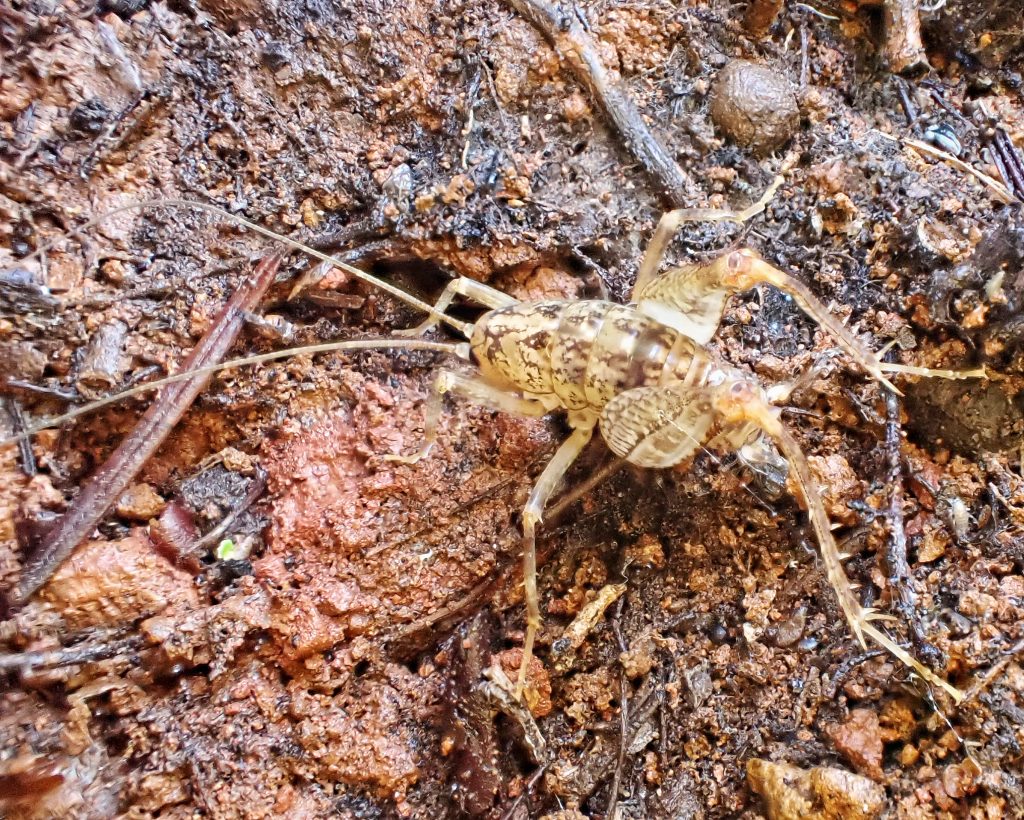
I cannot be absolutely positive that this camel cricket, (family Rhaphidophoridae) which I found under a chunk of bark in the Rogue River-Siskiyou National Forest during my November excursion to the area (a trip described in my post titled ‘Pivoting’), is Pristoceuthophilus celatus, because the only key to this genus that I could find was published in 1916 by A. N. Caudell, and it contains only 6 of the 11 species now considered to be valid. I can say with certainty that it is a Pristoceuthophilus, because of the presence of a cool little horn on their forehead, and tubercles that sculpture the dorsal abdomen. It keys to P. celatus in Caudell, and the angled hind tibia (which appear to be for holding reluctant females during mating) and flanged cerci don’t match those of P. sargentae or P. gagei, both of which were discovered in the PNW, and described after Caudell’s key was published, but there may be other similar species for which I cannot find a description.

Probably because they are nocturnal creatures that are not easily observed, there is a dearth of information on the natural history of any of the non-cave dwelling members of the subfamily Ceuthophilinae. But I was able to find out that they are omnivorous consumers of plant and animal detritus (including feces). They are wingless, and thus unable to chirp like other crickets, and they don’t even have any hearing organs. It appears that males find females for mating by touching them with their antenna, and the males may produce some sort of pheromones that attract the females to within antennal range.
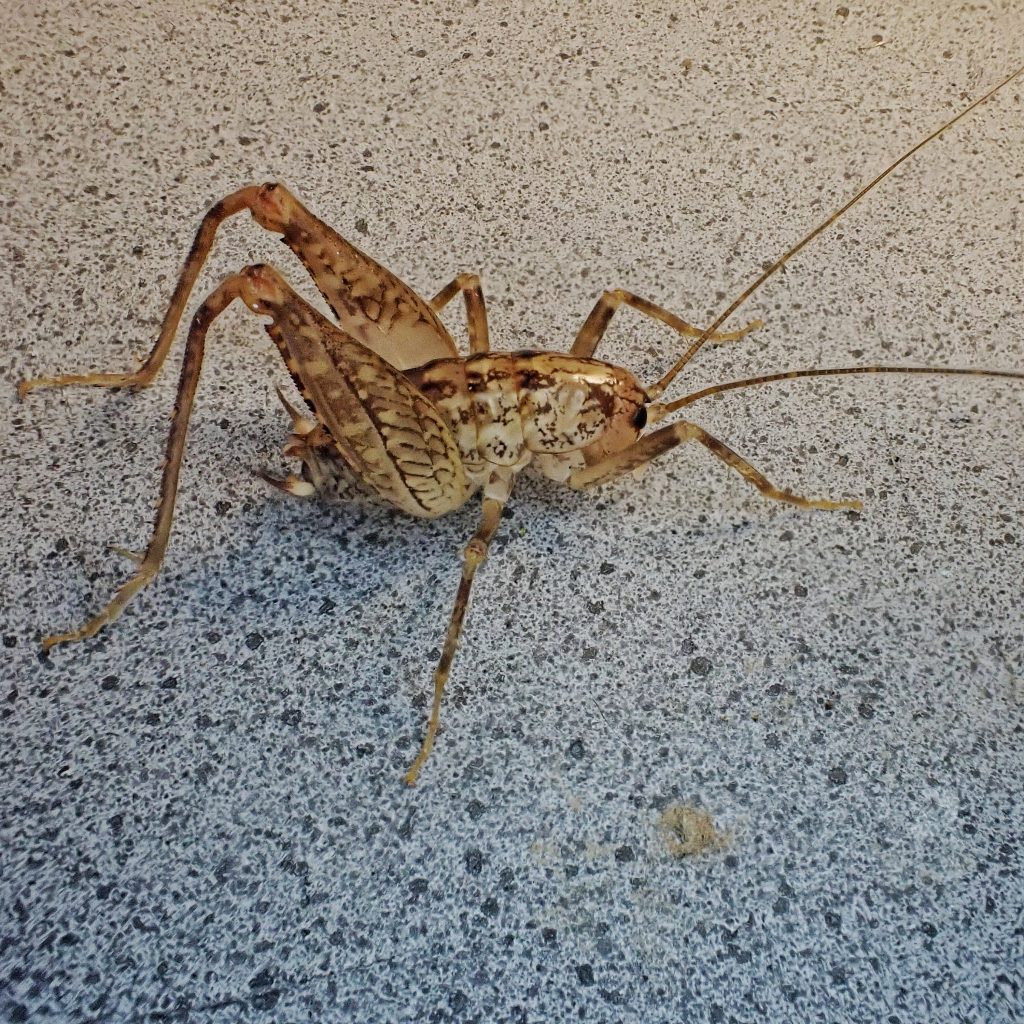
They are sometimes nuisance pests in homes, particularly in dark and damp basement areas, and are known to eat paper and fabric in those situations, as well as rodent feces. Their very long legs are apparently scary to some people, but they are harmless creatures that do not bite. Personally I find the camel crickets in general to be beautiful bugs, and I’m always thrilled to find one. The mottling of this Pristoceuthophilus celatus was particularly aesthetically pleasing, and it was the highlight of that afternoon’s bug hunting.
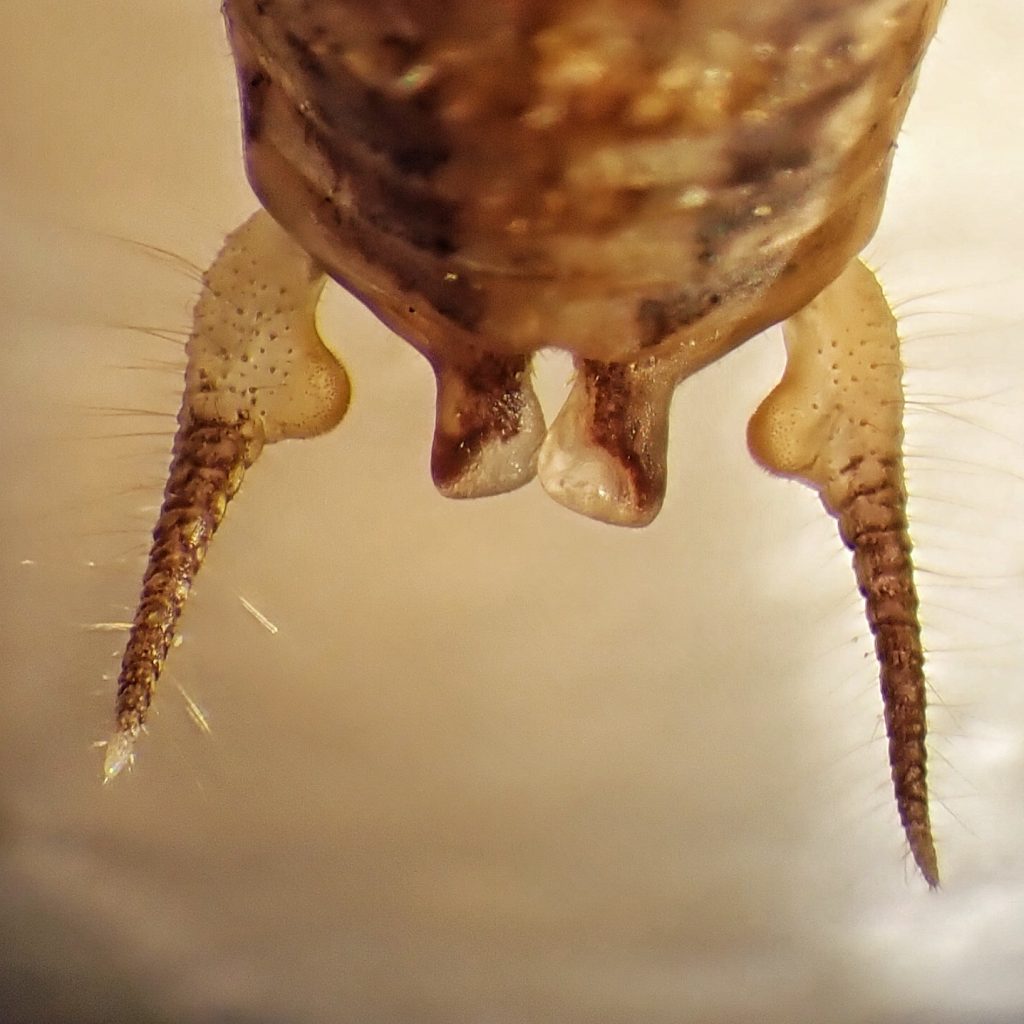
Description– Small to medium sized (10-15mm body length) mottled brown, tan, and yellowish camel cricket with variable patterning, a humpbacked appearance, and very long antenna; femur of hind legs very broad and extends past the abdomen, and hind tibia is moderately angled near the femur; has a conical horn between the eyes and slightly above the antennal bases; abdomen has a mix of narrow tubercles and 4-5 smooth humps; wingless and earless.

Similar species–Pristoceuthophilus sargentae, P. gagei, P. tuberculatus all have straight hind tibia, and male cerci lack flanges; P. salebrosas and P. pacificas lack smooth, raised areas on the abdomen, and male cerci lack flanges; Ceuthophilus spp. lack horn on forehead, and sculpturing on abdomen.

Habitat-Floor to mid tree height in moist to mesic forests and woodlands; usually in abandoned animal burrows or under bark, logs, rocks and other cover during daylight; forages nocturnally.
Range-Found only in w BC, west of the Cascades in Oregon and Washington, and in sw Oregon and nw California
Adults active-Nocturnal; year around
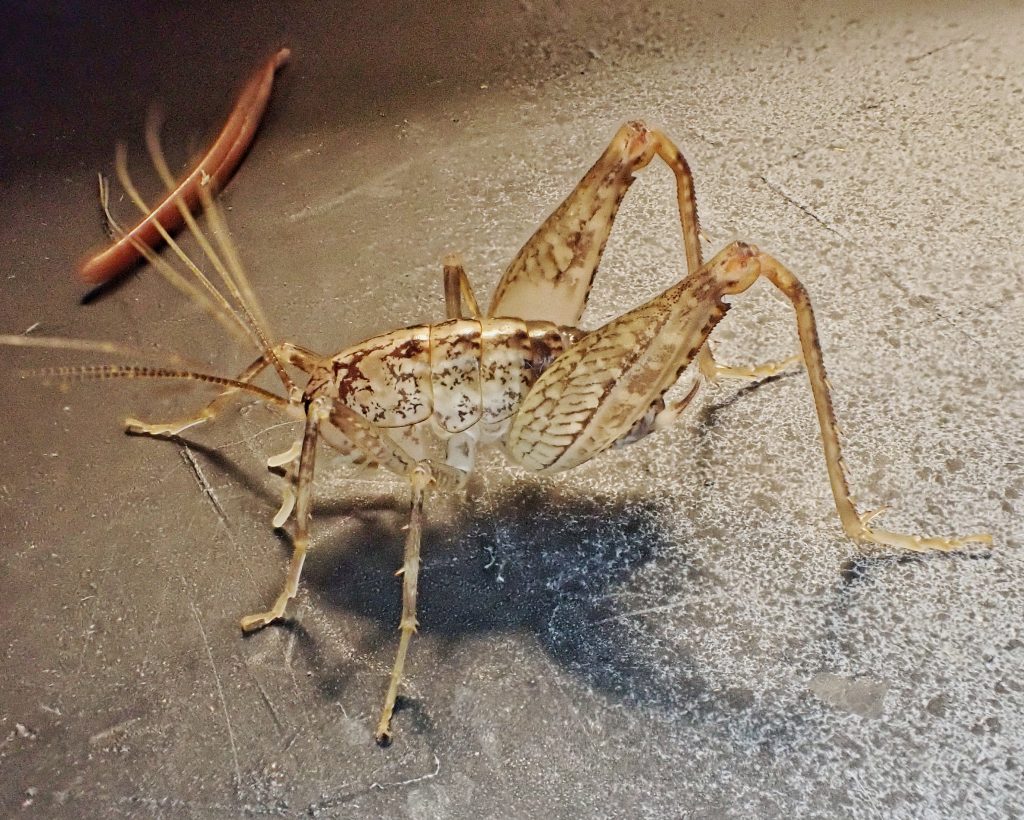
Eats– Primarily an omnivorous detritivore, but occasionally feeds on tiny arthropods and their eggs when encountered; when found in homes they often feed on paper and fabrics.
Eaten by– Insectivores of all classes; may be parasitized by nematode hair worms and tachinid flies.
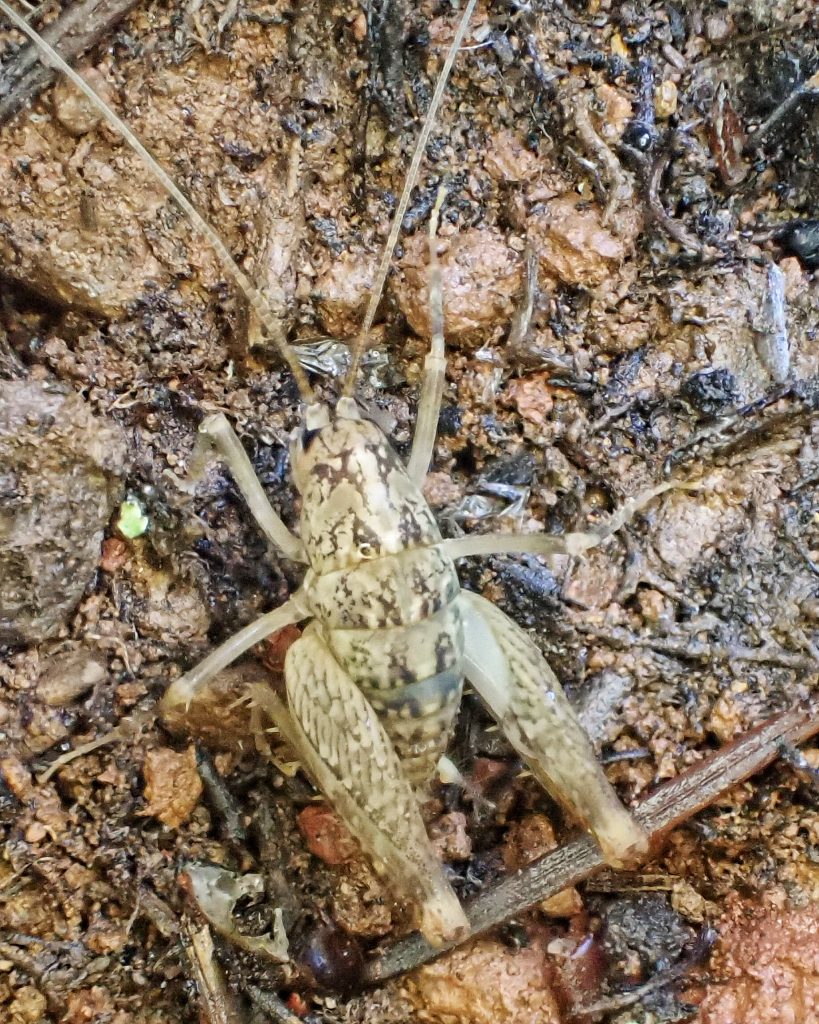
Life cycle– I can’t seem to find any information on the life cycle of these camel crickets, but it seems likely that eggs are inserted into the soil in the late spring/early summer, hatch into nymphs, and overwinter as either nymphs or adults.
Etymology of names–Pristoceuthophilus is from the Greek words for ‘saw/file’ and ‘loving to hide’, the latter being from Ceuthophilus, the genus to which they were originally assigned and an appropriate name for these cryptic and nocturnal camel crickets, while the former possibly refers to the tubercles and other ornamentation on the dorsal abdomen of members of this genus, although it may refer to the teeth on the lower surface of the lower ovipositors of the females. The specific epithet celatus is the Latin word for concealed, which again refers to their hidden lives, but may also be a bit of a pun, since the Greek word kēlē means ‘tumor/swelling’ which could refer to the 5 smooth, elevated areas on the dorsal abdomen of this species.

Species Pristoceuthophilus celatus – BugGuide.Net
Camel cricket • Pristoceuthophilus celatus – Biodiversity of the Central Coast
https://repository.si.edu/bitstream/handle/10088/14926/1/USNMP-49_2130_1916.pdf
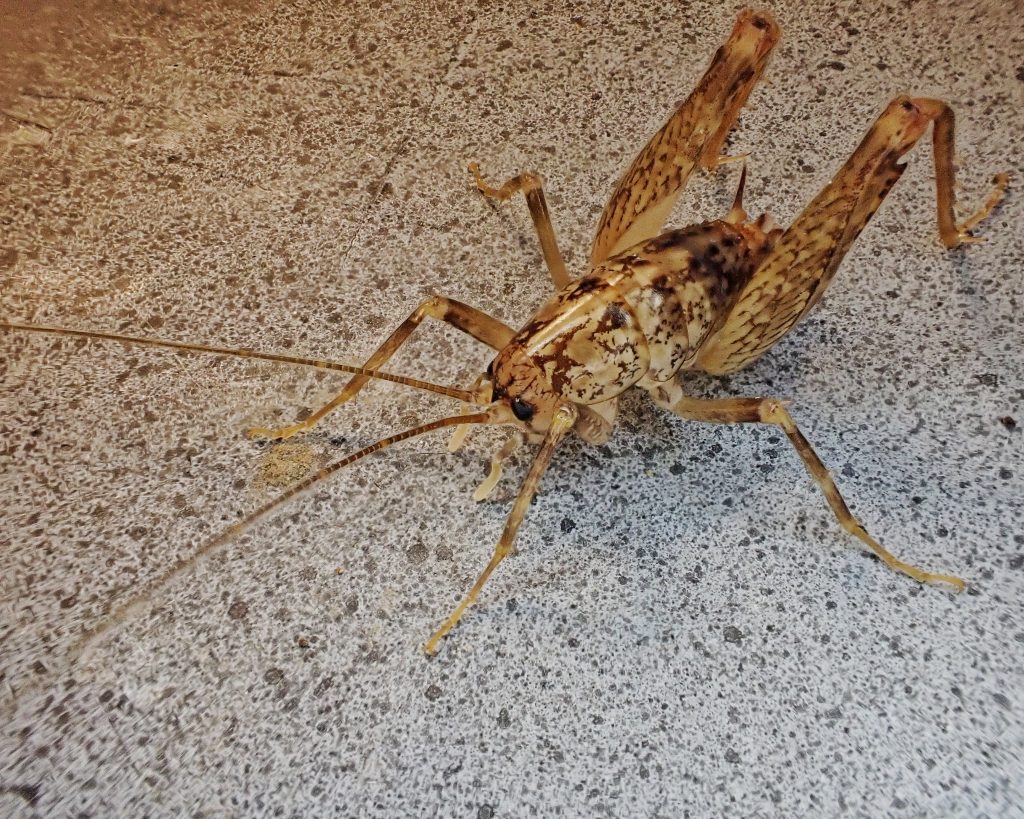
Very interesting and effective photography, as usual.
Thanks, Brooke!